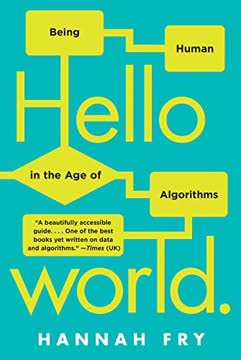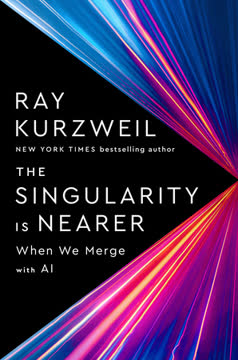Key Takeaways
1. Innovation: Building on the Shoulders of Giants
The history of mankind is built on new thinking.
Cumulative progress. Human innovation is a continuous feedback loop, where each generation builds upon the tools and knowledge of the last, leading to accelerating advancements. This process transforms the world, sometimes profoundly, sometimes less so. Nikola Tesla, often called "The Man Who Invented the Twentieth Century," exemplifies this, contributing foundational technologies like alternating current and the induction motor, which are too pervasive to be confined to a single chapter.
Tesla's impact. Tesla's genius was so far ahead of his time that his inventions, like wireless power and remote control, seemed like magic to contemporaries. His work on alternating current powers our homes and motors our vehicles today. While some legends about him are unsubstantiated, his verified contributions are immense, making him a poster boy for advanced technology being indistinguishable from magic.
Foundation building. This principle of building on prior work is the core narrative thread throughout history. From the earliest tools to modern artificial intelligence, each breakthrough stands on the foundation laid by previous thinkers and inventors. Understanding this cumulative process is key to appreciating the rapid pace of change in the modern world.
2. The Steam Engine Ignites the Industrial Revolution
This event was the single biggest change for mankind in history.
Life before. Before the Industrial Revolution, most people lived agrarian lives, producing their own food, clothing, and shelter within their local communities. Life expectancy was low, disease and malnutrition were rampant, and travel was limited to the speed of a horse. Over 80% of the population lived on farms, a stark contrast to less than 1% in the US today.
Steam power's dawn. The revolution began in England around 1712 with Thomas Newcomen's practical steam engine, initially used to pump water from mines. James Watt significantly improved this engine in the 1760s, making it vastly more efficient by using a separate condenser. This innovation, commercialized by Boulton & Watt, cut fuel use by 75% and introduced the concept of "horsepower" to quantify machine power.
Transforming society. Watt's improved steam engine enabled powered factories and mass production, particularly in textiles. This created new urban jobs, drawing people away from farms and leading to unprecedented population shifts. Steam power also revolutionized transport with the invention of the locomotive, allowing goods and people to travel long distances quickly for the first time, fundamentally reshaping economies and daily life.
3. Electricity Connects the World and Lights the Way
By 1900, a few great minds had given us the telephone, recorded sound, electric light, and trains.
Early discoveries. Electricity was a mystery for centuries until William Gilbert coined the term in 1600. Alessandro Volta created the first battery, the voltaic pile, in 1799, challenging the idea that electricity only came from living things. Humphry Davy demonstrated early electric lighting with arc lamps around 1805, but they were too hot and dangerous for widespread use.
Faraday's breakthroughs. Michael Faraday, despite limited formal education, revolutionized understanding of electricity and electromagnetism. He invented the DC electric motor in 1821 and the electric generator (dynamo) in 1831. While early dynamos were inefficient, they proved electricity could be generated from motion, laying groundwork for future power systems.
Communication revolution. Charles Wheatstone and William Cooke developed the electric telegraph in England in the 1830s, proving rapid long-distance communication was possible. Samuel Morse independently developed the single-wire telegraph and Morse code in the US, spurred by personal tragedy. The transatlantic telegraph cable in 1858, though short-lived, connected continents. Alexander Graham Bell's invention of the telephone in 1876 allowed voice communication over distance, leading to AT&T. Thomas Edison's phonograph in 1877 enabled recorded sound, and his improvements on incandescent lighting (building on Joseph Swan's work) brought electric light into homes by the late 1870s.
4. Early 20th Century: Cars, Planes, and Mass Media Emerge
The opening decade was a sign that this century would be very different from the last.
Automobile's rise. The early 1900s saw the internal combustion engine challenge steam power for transport. While early cars included electric and steam models, gasoline cars improved. Henry Ford's genius lay not just in inventing (like his Quadracycle), but in revolutionizing production. His assembly line, inspired by other industries, drastically cut the time and cost of making cars like the Model T, making personal transport affordable for the common person and transforming American culture and economy.
Flight conquered. Becoming airborne was possible with balloons and zeppelins, but controlled, heavier-than-air flight remained the "Aerial Navigation Problem." Early attempts were often fatal (Reichelt, Lilienthal). The Wright Brothers, bicycle makers from Ohio, solved the control problem with wing warping and used a wind tunnel for systematic testing. Their first controlled powered flight in 1903, though initially doubted, proved the concept and kicked off the race for aviation, accelerating rapidly by the decade's end.
New personal tech. This era also brought technology into daily life in new ways. The phonograph and gramophone brought "private music" into homes, with records becoming mass-produced and affordable. George Eastman's Kodak Brownie camera made photography accessible to everyone with its simple "You push the button, we do the rest" approach. Leo Baekeland invented Bakelite, the first plastic, in 1909, a versatile material that quickly found countless applications.
5. War Accelerates Invention: From Aircraft to Early Computers
When your country is at stake, you must innovate to win or die trying.
WWI's technological push. World War I, ignited by the assassination of Archduke Franz Ferdinand in 1914, became the first industrial and scientific war. The desperate need for military advantage spurred rapid innovation. Germany's U-boats revolutionized naval warfare, while the development of aircraft synchronization gears enabled machine guns to fire through propellers, giving early air superiority. Strategic bombing emerged, and aircraft engines saw rapid improvement (e.g., Bentley, BMW).
Post-war landscape. The war's end in 1918 led to the collapse of major empires and economic devastation, particularly in Germany due to the Treaty of Versailles. Hyperinflation crippled the German economy in the early 1920s. Despite the hardship, the war's demands had accelerated technologies like stainless steel (invented by Harry Brearley in 1912) and laid groundwork for future advancements.
Companies born from conflict. The war's disruption also created opportunities. Japanese companies like Sharp (from mechanical pencils) and Panasonic (from electrical fixtures) found market gaps. IBM, initially the Computing Tabulating Recording Company, grew its punch-card business. Boeing, founded in 1916, secured early contracts from the US Navy during the war, pivoting to commercial aircraft and even furniture post-war to survive the military surplus market.
6. The Transistor and Chip: Miniaturizing the Digital Age
The transistor may be the most important invention of the twentieth century.
Vacuum tube limitations. Early electronic devices, including computers and telephone amplifiers, relied on power-hungry, unreliable vacuum tubes. AT&T's Bell Labs sought a better solution for amplifying telephone signals across long distances. They focused research on semiconductors, materials with conductivity between conductors and insulators, which had shown promise in wartime radar.
The Bell Labs trio. In 1945, Bell Labs assembled a team including Walter Brattain, John Bardeen, and William Shockley to develop a semiconductor amplifier. After initial struggles, Bardeen and Brattain achieved a working transistor in late 1947. Shockley, feeling sidelined, developed a more robust version but attempted to claim sole credit, leading to conflict. The patent was ultimately credited to Bardeen and Brattain, though all three received the Nobel Prize in 1956.
Integrated circuit. While transistors were smaller and more efficient than vacuum tubes, connecting them with wires limited miniaturization. Scientists sought to integrate entire circuits onto a single piece of semiconductor. This idea was realized by the "Traitorous Eight," who left Shockley Semiconductor to form Fairchild Semiconductor in 1957. Their development of the practical integrated circuit, using chemical etching, made it possible to pack millions of transistors onto a chip, becoming the building block of all modern electronics and leading to the formation of Intel by Robert Noyce and Gordon Moore (Moore's Law).
7. The Space Race Seeds the Internet and Personal Computing
The launch of Sputnik was a significant event.
Sputnik's shock. In 1957, the Soviet Union launched Sputnik 1, the first artificial satellite, stunning the world and igniting the Space Race. This spurred the US to create NASA and DARPA (Defense Advanced Research Projects Agency), driving innovation in rocketry, materials science, and computing. The Soviets achieved many early space firsts under the leadership of Sergei Korolev.
Internet's origins. Vannevar Bush's 1945 vision of a "Memex" machine that linked information by association foreshadowed the World Wide Web. In the 1960s, J. C. R. Licklider at DARPA laid the blueprint for a computer network, envisioning interconnected "Thinking Centres" and online collaboration. This led to ARPANET, the precursor to the internet, connecting computers in 1969.
Early computing advances. The 1950s saw the first all-electronic digital computer (Atanasoff-Berry Computer, ABC) and the first electronic general-purpose computer (ENIAC), initially used for military calculations. The first commercial general-purpose computer, UNIVAC, predicted the 1952 presidential election, bringing computers into the public eye. Early digital video games like Tennis for Two (1958) and Spacewar! (1961) emerged from scientific labs, showcasing interactive graphics and laying groundwork for a future industry.
8. The Personal Computer Revolutionizes Work and Home
It goes without saying that the personal computer revolutionized businesses and homes around the globe.
Hobbyist beginnings. The personal computer revolution began in 1975 with Ed Roberts' MITS Altair 8800, a computer kit for hobbyists made possible by Intel's microprocessor. Featured on the cover of Popular Electronics, it sparked immense interest. While primitive (switches and lights), it inspired young minds like Bill Gates and Paul Allen, who wrote a BASIC interpreter for it, founding Microsoft.
[ERROR: Incomplete response]
Last updated:
Review Summary
New Thinking receives mostly positive reviews for its accessible overview of technological history. Readers appreciate the engaging writing style and interesting anecdotes about inventors and innovations. Some criticize the lack of depth or new information, while others find it perfect for beginners. The book covers developments from the Industrial Revolution to modern AI, quantum computing, and biotechnology. Reviewers praise Altraide's ability to explain complex concepts simply. A few note factual errors or typos. Overall, it's recommended for those curious about the evolution of technology and its impact on society.
Similar Books










Download PDF
Download EPUB
.epub digital book format is ideal for reading ebooks on phones, tablets, and e-readers.




